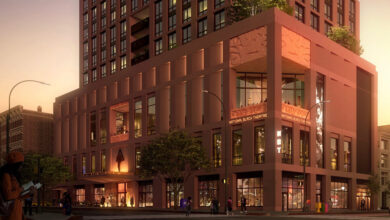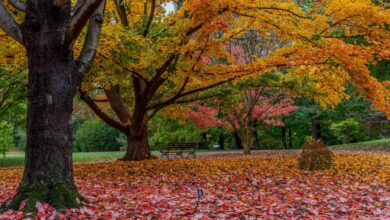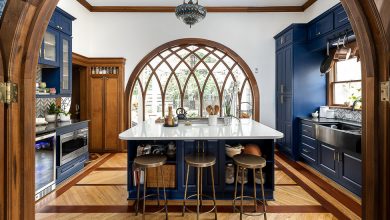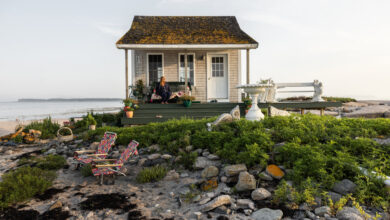House Hunting in Peru: An Eco-Compound in the Andes for $1.6 Million
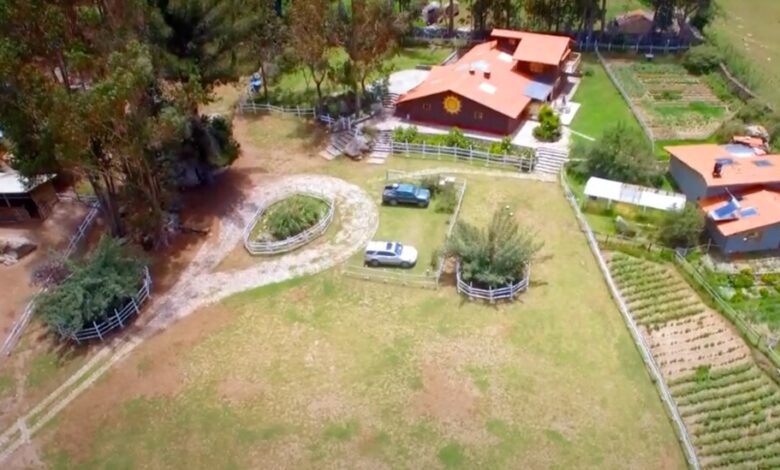
A Rural Bed-and-Breakfast Near Huaraz, Peru
$1.6 MILLION
This six-acre property, with a working farm and five residential structures totaling nine bedrooms, sits just outside the city of Huaraz, in western Peru, 12,000 feet above sea level at the base of the Cordillera Blanca mountain range.
Designed by the current owners, Wayne and Diana Lamphier, from Canada, the site was completed in 2006 and opened as the Lazy Dog Inn bed-and-breakfast. It includes a three-bedroom, three-bath main lodge with a vaulted ceiling and skylight, a three-bedroom cabin, two family-sized cabins that sleep four to five people, each with a fireplace and one bathroom, and a smaller one-bedroom cabin. The main lodge was recently expanded to allow for more social distancing.
Also on site are seven greenhouses and gardens with potatoes, beans, quinoa, tomatoes, broccoli and other vegetables. Eight horse stables, a training ring, a tool room, a storage shed and a sauna dot the rest of the farm. A Native American tepee with four single beds is also available for guests.
The living quarters, on the eastern side of the property, were built with locally sourced materials including Adobe mud brick, eucalyptus and pine, and inspired by the colorful architecture of the southwestern United States. On the western side is an undeveloped pasture with enough space for as many as five more cabins or extra greenhouses, Mr. Lamphier said.
Unending views of the mountains are available from every angle. “This is the exact opposite of escaping to a city like Lima,” said Roxana Jave, managing broker of Live in Peru Lifestyle Properties, which has the listing. “This is the Peru that foreigners are interested in. You’re off the grid but not so far off that you can’t get the essentials.”
Water is sourced from the mountains via a nearby community, and a wastewater system helps irrigate the pasture at the lower end of the property. Solid waste is composted with horse manure as fertilizer.
Over the years, Mr. Lamphier, an environmental consultant, and his wife have entertained locals and university students alike, who come to learn about the site’s sustainable practices. The six-acre parcel for sale is a portion of the couple’s larger property. They plan to retire and build a new house for themselves on the portion that is not for sale, and hope the new owner will continue to operate the bed-and-breakfast. They will also continue to run their NGO, Andean Alliance, and invest in a community center they built that sits outside the boundaries of the tract for sale.
“In a nutshell, our quality of life here is so much more than a dollar figure,” Mr. Lamphier said. “It’s about having a healthy and rewarding lifestyle, a cross-cultural exchange with the local community, and living in a comfortable, beautiful place.”
The property is about 25 minutes from Huaraz, home to some 120,000 residents and the capital of Peru’s Ancash region. The city is a tourist favorite thanks to its location at the boundary of Huascarán National Park, one of the world’s most popular climbing and hiking destinations. Comandante FAP Germán Arias Graziani Airport is a 45-minute drive north, while Lima’s Jorge Chavez International Airport is a near seven-hour drive. The most common and cheapest form of transportation in the area is an overnight bed bus.
Market Overview
The real estate market in and around Huaraz is underdeveloped, said Mr. Lamphier, who had to do “a lot of homework” to realistically valuate his own property. Even in Lima, Peru’s capital and largest city, with about 10 million residents, there is no multiple listings service or centralized website where buyers can hunt for homes.
Whereas sellers in Lima often work with a broker, in rural areas many attempt to sell their home themselves. “It’s an informal process,” Mrs. Jave said. “It’s the Wild West in a lot of ways, even when you try to value things.”
In Huaraz, she said, prices range from $70 to $110 a square foot, with a median price of around $93 a square foot. (Peru operates on the sol, but listings are often marketed in U.S. dollars.)
Since the pandemic began, Mr. Lamphier has seen more people move out of Huaraz and into the mountains, where, over the last two to three years, there have been updates to roads and some newly developed properties. Undeveloped lots with a road and access to power typically go for no more than $11 a square foot.
The market in Lima is a different story. The pandemic didn’t hit real estate as hard as other local industries such as mining, oil and agriculture, though foreign interest evaporated. “Expats and foreign buyers were completely erased from Peru at the beginning of the pandemic,” said Nella Pinto, the general manager of Peru Sotheby’s International Realty. (As of May 4, Peru had reported more than 1.8 million Covid-19 cases and 61,126 deaths according to the New York Times’s coronavirus map.)
Political turmoil — including a runoff election in June to elect Peru’s fifth president in five years — is also shaking the industry, said Miguel Barragan, a broker and owner of Re/Max Royal in Lima. Last April, Peru’s congress passed a controversial law empowering the country’s central bank to set minimum and maximum interest rates every six months in order to regulate the loan market.
But demand for homes in the capital is gradually returning, a cause for some optimism for the coming year. “The economy is expected to grow 10 percent in 2021, and demand for real estate will rise with it,” Mr. Barragan said.
More people are now hunting for larger spaces with better ventilation, balconies and gardens. According to the Argentina-based listing website Properati, which covers much of South America, 55 percent of all Peruvian properties sold in 2020 had three bedrooms. It also found that sales of beachside properties increased by 25 percent in October and November. Ms. Pinto said many clients who fled the city for short-term stays in single-family homes near the beach or country wound up buying homes there, while inquiries for beach houses or second homes in the Sacred Valley, to the south, have steadily increased in the first quarter of 2021.
As for pandemic prices, the Association of Real Estate Companies of Peru (ASEI) reported that the value of a square meter in Lima fell slightly from spring to summer in 2020. But as of this January, prices had climbed by 5 percent year over year, to about $1,650 a square meter ($154 a square foot.)
“We have this weird phenomenon that occurs in Peru,” said Juan Carlos Tassara, president of ASEI. “Too much demand and the prices don’t move.”
The most expensive apartments in Lima, which range in size from about 2,500 to 6,500 square feet, Ms. Pinto said, are currently going for up to $560 a square foot. Amenities in these midsize to larger buildings typically include a terrace, storage, free parking and ocean views.
Who Buys in Peru
While buyers from Asia, Europe, and neighboring countries like Chile and Columbia were prominent before 2020, interest from American and Canadian buyers has long dominated in metropolitan Lima, agents said. (The Lamphiers, for example, said they have local friends from Minnesota, Seattle and Philadelphia.)
For Mr. Barragan, both sales to foreigners and referrals from other Re/Max offices abroad have decreased significantly. “I’m not getting nearly as many referrals as I was getting three to four years ago,” he said.
Buying Basics
There are no restrictions on foreign buyers in Peru, with the exception of properties near government installations and military bases.
“It’s best as a foreigner to get an assessment done of the property by an agent or lawyer to make sure it has no legal issues,” Mr. Barragan said. “We’re not allowed to charge for that, though, and many people can get scammed.”
Cash deals are common, and sellers may accept slightly less than the asking price if the offer is in cash. For this reason, Mrs. Jave doesn’t recommend getting a mortgage loan because loans from foreign banks aren’t accepted.
A notary must be brought on to work with the property registration agency, which creates a title for the new owner. Also, the final purchase must be cashed through a local bank. The buyer typically pays the notary fee of about 1,500 to 2,500 Peruvians sols ($395 to $650), depending on the value of the property, as well as the property transfer tax of 3 percent.
Websites
Languages and Currency
Spanish and Quechua; Peruvian sol (1 PEN = $0.26)
Taxes and Fees
The annual property tax on this home is about $10, Mr. Lamphier said, explaining that “Peru doesn’t assess or appraise specific property values outside the city if it’s classified as rural land.”
Contact
Roxana Jave, Live in Peru Lifestyle Properties, 1-312-709-1991; andeanecolodgeperu.com
For weekly email updates on residential real estate news, sign up here. Follow us on Twitter: @nytrealestate.


